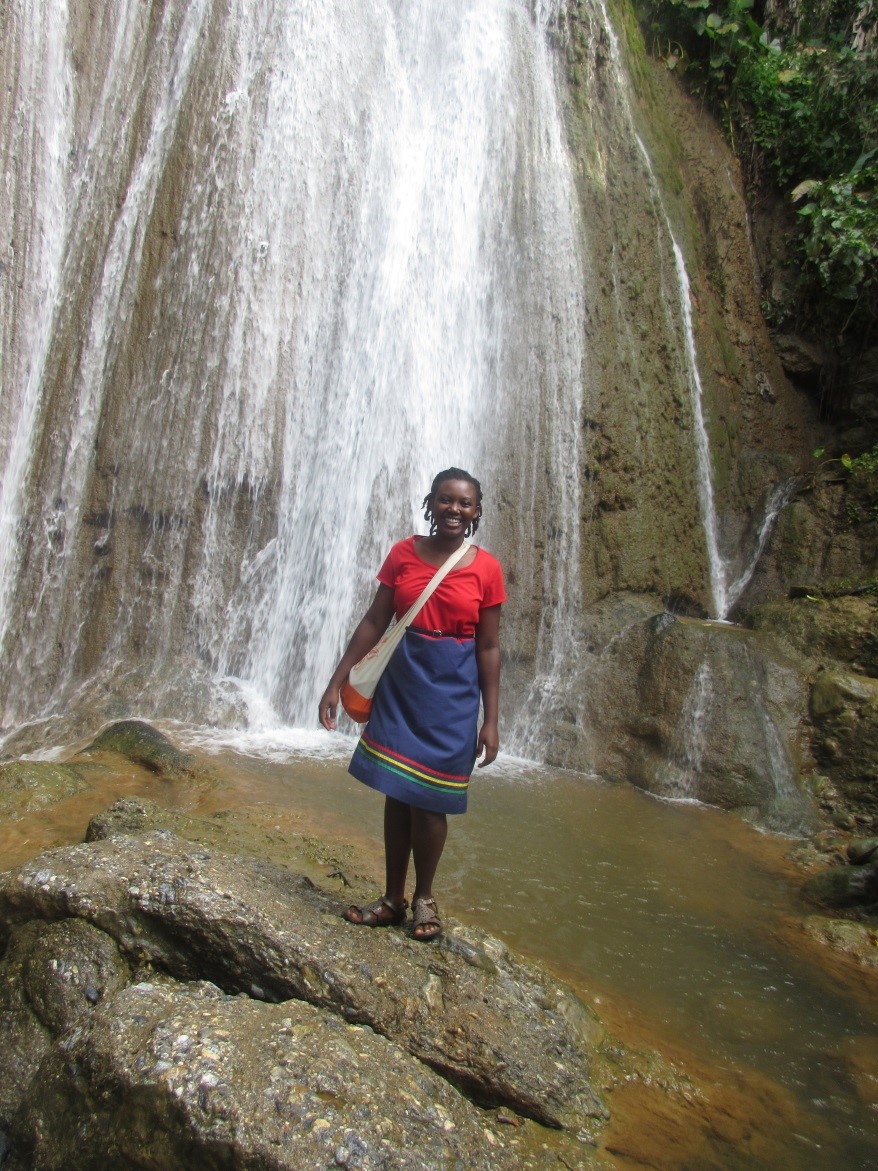During the 2011-2012 academic year, I had a Fulbright U.S. Student grant to Honduras. My research was about the women who bake cassava bread in the Afro-indigenous Garifuna community. In the Garifuna language, cassava bread is called ereba (uh-ray-buh). I studied how the women are using culinary tradition of ereba making as a means to economic development. Below is a picture of me trying to actually bake some ereba, which is harder than it looks.
In Honduras, I was also a cultural ambassador. Through my research I met a Garifuna woman, Lina Hortensia Martinez, who buys ereba in the villages and sells flavored cassava chips in the city. I built a bilingual website for her organization. You can take a look at http://www.wabagari.com.
As a doctoral candidate in International Relations, my Fulbright experience launched my research career, and I have presented my findings throughout the country and in Latin America. My Fulbright experience was also life changing and deepened my understanding of development issues and challenges. Previously, many of them were only scholarly concepts before they came to life in my community experiences. I am forever indebted to the communities of Ciriboya, Punta Piedra and Cusuna, in the Iriona region of Honduras, where I was based during my 10-month stay.
The Fulbright journey, however, started in the United States, when I was imagining the sort of research I wanted to do at the start of my career. It started with a team, or a community, of people committed to my vision for this research project. That team of people included professors, academic advisers, and community contacts. It took a village! If you are thinking about how to put together your application, you will need to surround yourself with people who understand and value your vision. With that in mind, I will leave you with five application tips:
- Start the process early! Everything (especially obtaining letters) always takes longer than you think it will, so give yourself more time than you think you need.
- Know your strengths. Whether you are a teaching assistant or research applicant, you should be able to articulate why you are the ideal person to do what you propose in your application.
- Research the country. As a cultural ambassador, it is important to make an effort to know the other culture, and that process starts long before you write your first application draft.
- Take advantage of campus resources. My university had an entire internal process for Fulbright applicants that included interview panels and reviews of letters of recommendation. Know what resources your current or previous school can provide, and take advantage of them.
- Have people review your application materials. You will need to write multiple drafts. This is not an application you can put together overnight, and the best way to improve it is to have others read it.
Good luck with your applications!



3 Comments
Hi Kia,
Sounds like a fascinating project! I hope all is going well for you.
Aaron
Very interesting project! I am a Fulbright alumni from Guatemala who was born and raised in Izabal, a caribbean region with strong garifuna influence. Cassava is also very popular in my community too. Have you thought to transfer your experience in other Central American countries?
Best, and good luck with your studies,
Christian.
Hi Aaron:
Things are going very well, and the collaborations continue! We just started an education fund for women working in the city making flavored cassava chips from ereba; this work supports rural cassava cultivation and ereba production. It’s a win-win for urban and rural development. For the most recent updates, you can go to http://www.erebairiona.org/.
Hi Christian:
You must be a mind-reader. Of course, I have thought about expanding my research. As you may know the Garifuna community is transnational, with ancestral villages in multiple Central American states, including Livingston, Guatemala. Stay posted to http://www.erebairiona.org/ for future projects.